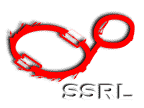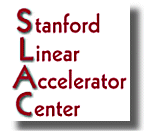| Recent
Advances in Medical Applications of Synchrotron Radiation Stanford Synchrotron Radiation Laboratory March 4-5, 2002 Program Director: Edward Rubenstein |
|
Selection
of Silicon Crystal [333], [444] and [555] Harmonic Orders in DEI
Z. Zhong National Synchrotron Light Source, Brookhaven National Laboratory Upton, NY 11973, USA |
| The
refraction angle of x rays as they pass through a refractive prism
is proportional to the square of the x-ray wavelength. This was used
to discriminate between different harmonic orders, which have different
energies, created by a two-crystal 111 monochromator [1]. Refractive
prisms inserted between the two monochromator crystals allowed selection,
between the 111, 333, 444 and 555 diffractions, in our Diffraction
Enhanced Imaging program at NSLS's X15A beamline, and facilitated
convenient change of sensitivity in our efforts to optimize DEI system
for m
ammography and other radiographic applications. The selection
of 111 and 333 refractions were straight-forward since the necessary
angle of refraction is small. The challenge of selecting 444 and 555
reflections were met by designing an acrylic prism that offered an
angle of refraction much larger than 10 micro-radians and was compact
enough to be manipulated in the small space between the crystals.
Examples are given on use
of the prism for studying the effects of
diffraction orders on DEI's refraction and extinction contrasts. Its
modes of operation and limitations are discussed. The principle of
harmonics selection through prism and the specific design of the device
could be relevant for other synchrotron monochromators that have a
harmonics concern or can benefit from change of energy, through selection
of harmonic orders, without changing
crystals. The work was supported by US DOE contract DE-AC02-76CH10886. |



